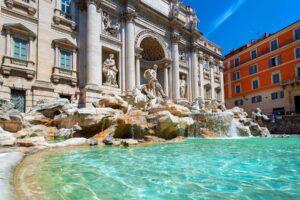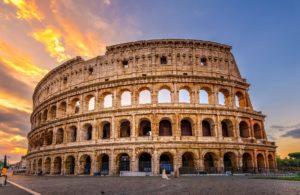Fodor's Expert Review Chiesa del Gesù
With an overall design by Vignola and a facade and dome by Della Porta, the first Jesuit church in Rome influenced the city’s ecclesiastical architecture for more than a century. Consecrated in 1584—after the Council of Trent (1545–63) solidified the determination of the Roman Catholic Church to push back against northern Europe's Reformed Protestants—Il Gesù also became the prototype for Counter-Reformation churches throughout not only Italy but also Europe and the Americas.
Although low lighting underplays the brilliance of everything, the inside of the church drips with gold and lapis lazuli, gold and precious marbles, and gold and more gold. The interior was initially left plain to the point of austerity; when it was finally fully embellished 100 years later, no expense was spared to inspire believers with pomp and majesty. The most striking element is the ceiling, where frescoes swirl down from on high and merge with painted stucco figures at the base. The artist... READ MORE
With an overall design by Vignola and a facade and dome by Della Porta, the first Jesuit church in Rome influenced the city’s ecclesiastical architecture for more than a century. Consecrated in 1584—after the Council of Trent (1545–63) solidified the determination of the Roman Catholic Church to push back against northern Europe's Reformed Protestants—Il Gesù also became the prototype for Counter-Reformation churches throughout not only Italy but also Europe and the Americas.
Although low lighting underplays the brilliance of everything, the inside of the church drips with gold and lapis lazuli, gold and precious marbles, and gold and more gold. The interior was initially left plain to the point of austerity; when it was finally fully embellished 100 years later, no expense was spared to inspire believers with pomp and majesty. The most striking element is the ceiling, where frescoes swirl down from on high and merge with painted stucco figures at the base. The artist Baciccia achieved extraordinary effects, especially over the nave in the Triumph of the Holy Name of Jesus. Here, the figures representing evil who are being cast out of heaven seem to hurtle down onto the observer.
The founder of the Jesuit order himself is buried in the Chapel of St. Ignatius, in the left-hand transept. This is surely one of the most sumptuous altars in Rome, though as is typical of Baroque decoration, which is renowned for its illusions, the enormous globe of lapis lazuli that crowns the alter is really only a shell of lapis over a stucco base. Note, too, architect Carlo Fontana’s heavy, bronze altar rail, which is in keeping with the surrounding opulence.
READ LESS








